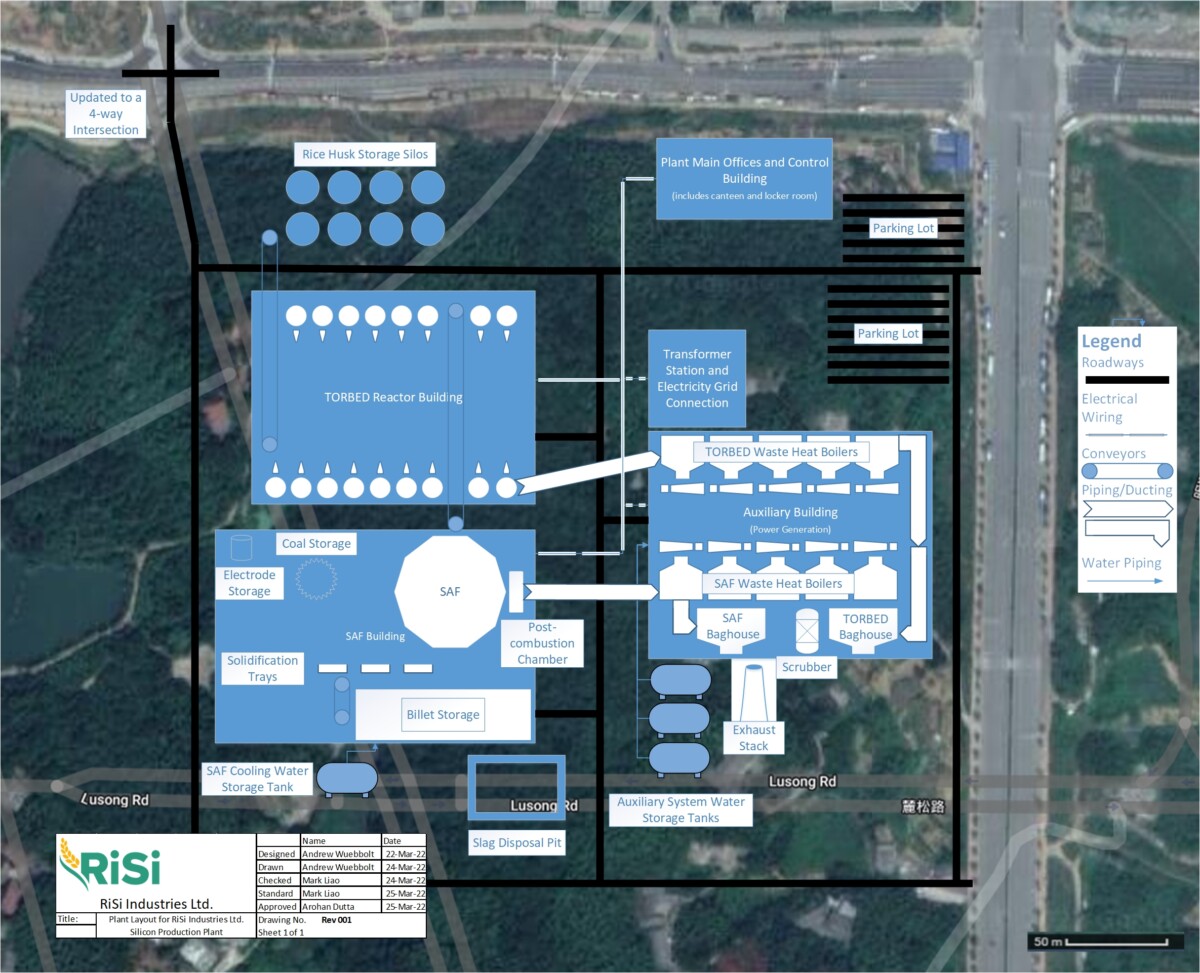In early April, fourth year Materials Science & Engineering students wrapped up their final capstone projects, where working in small groups, they complete a project and report involving the design of a materials processing plant.
“I am impressed by the quality and technical depth of the works the students accomplished during the 8-months course”, said Ge Sa, MSE498 Course Instructor, “They tackled a diverse list of real-world project topics from the metallurgical and material industry and delivered outstanding solutions by applying their strong theoretical knowledge, while staying focused on decarbonization – the biggest challenge our industry faces today. From an employer’s perspective, the entrepreneurism, and multi-disciplinary skills they have demonstrated are highly valued and assets in their future careers.”
Each year MSE498 selects the top projects. We are pleased to announce this year’s winning projects and the innovative solutions:
First place: Silicon and energy recovery from rice husks
Team members: Andrew Wuebbolt (Project Manager), Arohan Dutta, Pin-Tsung (Mark) Liao, Siegfried Gautama, Juan Pablo Tupac
Project Summary: The project focused on taking refused rice husks and repurposing them to reap their full potential. Using a method that combusts these rice husks and refines the silicon contained within, the team designed a material processing plant that produced a marketable metal product and converted the internal potential energy into useful electrical energy. As the rice husks are combusted, heat from the off-gases produces steam to runs turbines and produces enough electricity to both run the plant and feed into the local electrical grid. Once combusted, the rice husk turns into what is known as Rice Husk Ash. This ash is remarkably rich in silicon dioxide (SiO2) which is then refined in a submerged arc furnace and turned into silicon metal billets to be sold.
“Working with my team throughout 4th year was an eye-opening experience“, said Andrew Wuebbolt, “Our project was unique in that there are currently no industrial plants producing silicon metal from rice husks which added an extra challenge for us. Hopefully in the coming years, my teammates and I can put our newfound skills to use in industry.”


Second Place: Ironmaking using the ITmk3 process
Team members: Daniel Persaud (Project Manager), Gloria Vytas, Julia Bincik, Tommy Yuan, Jackson Ngo.
Project Summary: Over the years, there have been three major ironmaking technologies, the first two being blast furnaces and direct reduction iron making (DRI). Both processes are very time and energy intensive, and not environmentally friendly. The team focused on using a third type of iron-making technology called “ITmk3” to design a process that generate a million tonnes of high-quality iron nuggets while reducing emissions and energy requirements compared to the other ironmaking methodologies, ensuring safe and reliable working conditions, and maximizing the return on investment. The proposed ITmk3 process combines iron ore concentrate, bentonite binder, anthracite coal, and limestone flux into pellets which are sent into the RHF and heated to 1400°C by the combustion of natural gas with preheated air. This produces an iron product with little to no impurities like copper and nickel, which is ideal for steel production down the line, and as the demand for steel increases to rise, safe and reliable means of producing iron is tremendously valuable.
“Over the last year of my Materials Engineering program, my team and I had the opportunity to put all the knowledge gained through the previous 3 years of study into practice “, said Daniel Persaud, “Not only was this project a great means of putting all the theory we picked up over our undergraduate classes, but we also learned a tremendous amount along the way, developing new skills necessary to get a big project off the ground.”

Third Place: Oxygen Blast Furnace
Team members: Tony Dong (Project Manager), Linke Huang, Ada Li, Harrison Wang, Jackie Cheng.
Project Summary: Blast furnace is a type of metallurgical furnace in which iron ore is reduced into liquid iron that typically contains around 3-5 wt.% carbon content and other impurities (pig iron). It is a key component within the integrated/basic oxygen steelmaking process, which accounts for around 70% of steel production worldwide. In this project, the team worked on an improved variant of the blast furnace called the oxygen blast furnace (OBF), where the preheated atmospheric air is replaced by a synthetic gas with high concentration of oxygen. The goal of the design was to improve energy efficiency and decrease greenhouse gas emissions . The team composed the technical design of a new OBF plant to be built in Becancour, Quebec, evaluated and determined that such a project is economically feasible and can markedly decrease the environmental impact of local steel production.
“Completing this project was very rewarding and a perfect culminating experience in our MSE education”, said Tony Dong, “I really enjoyed applying core materials principles and especially evaluating their implications in a real world setting in terms of economics and environmental impact.”
